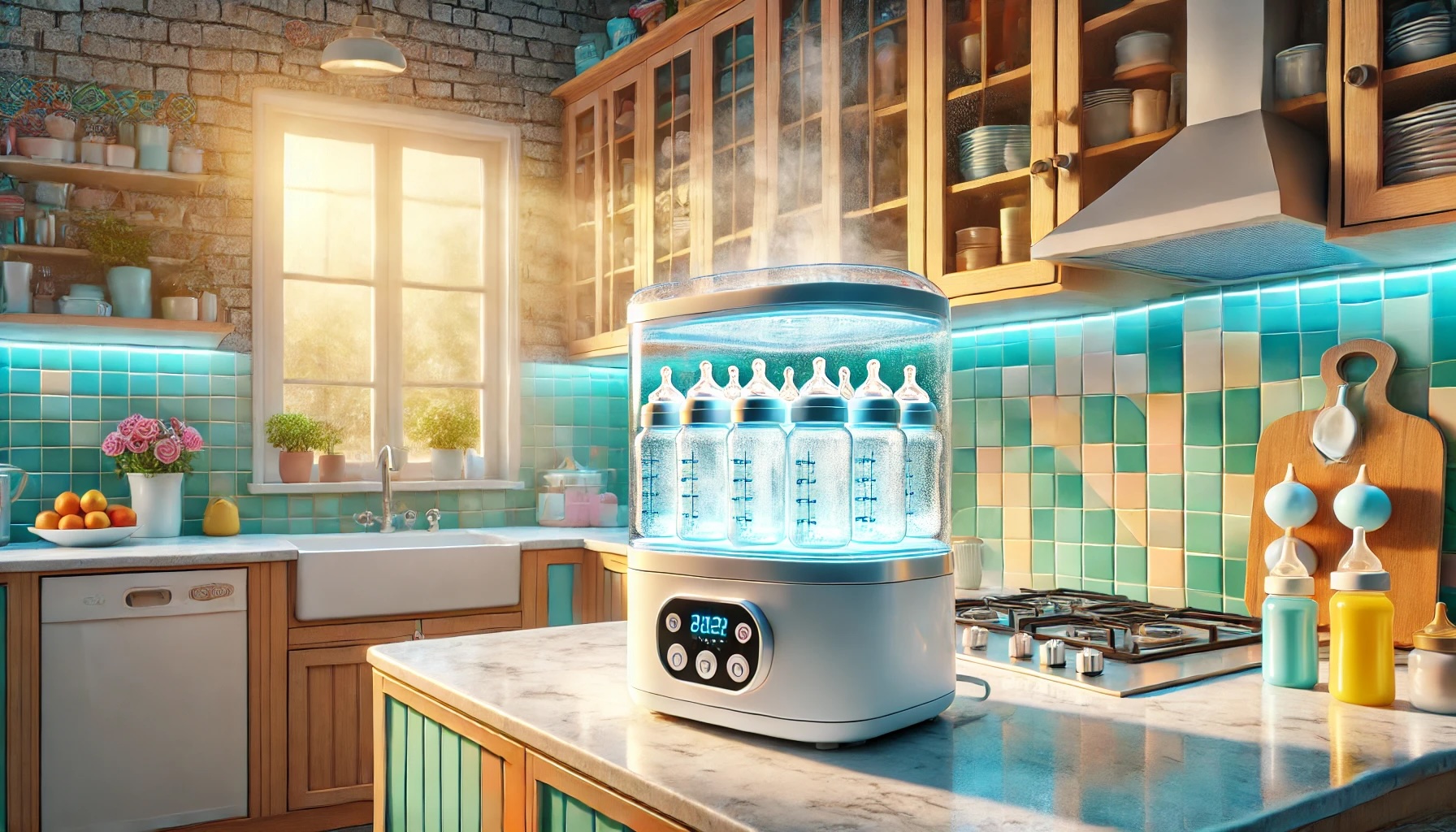Ensuring your baby’s feeding equipment is properly sterilised is crucial in protecting them from infections, particularly diarrhoea and vomiting. The NHS recommends sterilising all feeding equipment, including bottles and teats, until your child is at least 12 months old.
Before Sterilising: Cleaning the Equipment
- Immediate Cleaning: After each feed, clean bottles, teats, and other feeding equipment in hot, soapy water as soon as possible.
- Use Appropriate Brushes: Employ a clean bottle brush for bottles and a small teat brush for teats to ensure thorough cleaning.
- Avoid Harmful Substances: Do not use salt to clean teats, as it can be dangerous for your baby.
- Rinse Thoroughly: After washing, rinse all equipment in clean, cold running water before sterilising.
Methods of Sterilisation
There are several effective methods to sterilise your baby’s feeding equipment:
1. Cold Water Sterilising Solution:
- Preparation: Follow the manufacturer’s instructions to prepare the solution.
- Submersion: Ensure all equipment is fully submerged, with no air bubbles trapped inside bottles or teats.
- Duration: Leave the equipment in the solution for at least 30 minutes.
- Maintenance: Change the sterilising solution every 24 hours.
2. Steam Sterilising (Electric or Microwave):
- Usage: Adhere to the manufacturer’s instructions specific to your steriliser model.
- Positioning: Place bottles and teats with openings facing downwards in the steriliser to allow effective steam penetration.
3. Boiling:
- Suitability: Confirm that the items are safe to boil.
- Process: Place equipment in a large pan of water, ensuring all items are fully submerged.
- Boiling Time: Boil for at least 10 minutes.
- Caution: Regularly check for damage, as teats may deteriorate faster with this method.
Post-Sterilisation Handling
- Storage: Keep bottles and teats in the steriliser or pan until needed to maintain sterility.
- Assembly: If removed, immediately assemble bottles with teats and lids to prevent contamination.
- Hygiene: Wash and dry your hands thoroughly before handling sterilised equipment, or use sterile tongs.
- Clean Surface: Assemble feeding equipment on a clean, disinfected surface or the upturned lid of the steriliser.
Key Considerations
- Dishwasher Use: While dishwashers can clean feeding equipment, they do not sterilise it.
- Regular Inspection: Frequently check bottles and teats for signs of wear or damage, replacing them as necessary to ensure safety.
By diligently following these guidelines, you can significantly reduce the risk of infections and ensure your baby’s feeding equipment remains safe and hygienic. For more detailed information, refer to the NHS guidelines on sterilising baby bottles.
